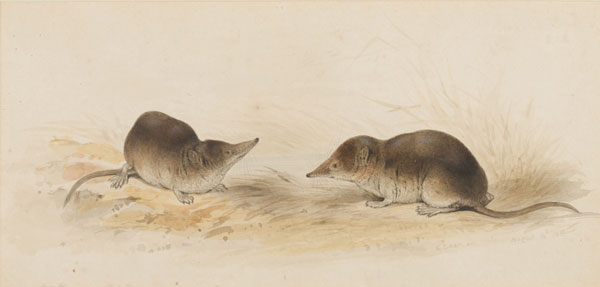
“Water Shrews” painted by Edward Lear. A new blog by Robert McCracken Peck
by Robert McCraken Peck, Curator of Art and Artifacts and Senior Fellow of the Academy of Natural Sciences of Drexel University, Philadelphia, PA 19103.
“Water shrews” by Edward Lear (1812–1888). Courtesy of Guy Peppiatt.
Edward Lear (1812-1888) was born on 12th May 1812. He best remembered today for his humorous limericks and nonsense poetry, but less well known is that he made his living as an artist, traveling widely in Europe, the Middle East and India while creating wonderful paintings of the areas he saw.

The London art dealer Guy Peppiatt organized an exhibit virtually through his gallery this spring (2021). Of special interest to me in the exhibit was one of Lear’s rare natural history paintings, a charming watercolour of a pair of water shrews. When it was painted, in 1832, Lear was just twenty years old and at the beginning of a decade-long period of life in which he focused almost exclusively on natural history subjects.

The shrew painting in Peppiatt’s exhibition was probably painted for Thomas Bell (1792–1880). Bell used it, along with several other paintings by Lear, as a source for one of the illustrations in his book, A history of British quadrupeds (1837).
Read the full story here